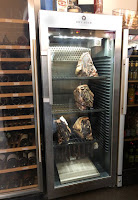One of the many serendipitous joys of my life as a professor was meeting Dejan Gajšek. When I started my innovation project on virtual reality a few years ago, I quickly found that the storage and distribution of large 360° video and still images on our own computer servers was not at all practical. Dejan was the marketing director of VIAR360, a startup company focused on providing just that service to VR publishers.
VIAR360 is a Slovenian company that had sent Dejan to Seattle to develop the U.S. market. Typical of Slovenians, he and the rest of the company were helpful to a fault – no mean trick considering how unreasonable the demands of journalists can be. With their help, we astounded our peers by streamlining what was once a days-long editing process to the point that my VR reporters had 360° images on the Columbia Missourian website within an hour of a news event.
I was so pleased that when I took a vacation to the Pacific Northwest, I made a point of going to coffee with Dejan in downtown Seattle. And as I’ve come to expect of his countrymen, he made of point of saying “You’ll have to come visit us. I want to show you my country.”
And last weekend he did. “Be prepared,” he said. “I promise this will be incredible.”
Dejan grew up near Celje, the third largest city in Slovenia, tucked between low mountains and rich valleys. It is famous, in part, because in the Celje Counts planted castles on those peaks like Sam Walton scattered Walmarts through the Midwest.
So Dejan, of course, guided us through the main Celje Castle and the fairytale streets of Old Celje. The city also hosts several museums, including the best display of an actual Roman road I have seen (including when in Rome).
But, he assured us, the best was still to come. He took us on a winding drive through the countryside near Celje, then up and up a mountain road to his parent’s “weekend house”near the tiny village of Javorje (“Maple”).
I think I now know the exhilaration that led Peter Mayle to his Year in Provence. The hilltop view as we drove up to the tall but compact yellow house was spectacular from any angle. Nothing, however, matched the panorama of mountains and valley behind the house, where a small vineyard clung to a steep hillside.
Down among those gnarled 400 vines, Joze and Milena Gajšek were pruning off the old growth and tying leaders to the wires to support next season’s bounty. Dejan’s dad works for a large titanium processing firm and his mom is a mathematics teacher, but weekends and holidays find them lovingly tending vines, picking grapes and crafting fine white wine in their cellar room.
There is the work we must do to live, then there is the work we live to do.
After a tour of the wine-making room, we retired to the patio. Milena laid out a bounty of smoked meats, fine cheeses, breads and fruits. Joze brought pitchers of his finest wine. Dejan provided translations when the four of us stumbled for words.
We didn't always need those translations. We shared our pride in our children, our love for our homes, our lives at or near retirement, the special joy that comes from making things with your own hands. Thousands of miles, centuries of tradition and the tongue-twisting of unfamiliar languages separated us, but age, experience and the simple trials of life spoke volumes in our eyes. On that special hilltop, there were no borders, no bounds.
Dejan’s talent at technology marketing has taken him to several countries – and he’ll likely try more – but I’ve never seen a young man so comfortable and proud as he was as he shared his little part of Slovenia with us.
We watched the sun go down over the mountains, snuggled into warm comforters for the night and watched light dance into the valleys the next morning. I kept finding myself back on that patio, soaking up the magic of the hilltop. Dejan lived up to his promise.
I would have happily just stayed there, but that is not the fate of a traveler. We drove back down the mountain past farms, vineyards and villages to Slovenia’s second largest city, Maribor. More medieval majesty, more fine food and a peek at the world’s oldest grape vine (picked with pride for 400 years).
And then the train back through the river valley to Ljubljana, our apartment home-away-from-home and preparation for Monday’s class.
Thankfully, the mind navigates where feet can no longer tread. When life next requires me to pause for a deep breath, I know where I can go.
A little hilltop in Slovenia.
We watched the sun go down over the mountains, snuggled into warm comforters for the night and watched light dance into the valleys the next morning. I kept finding myself back on that patio, soaking up the magic of the hilltop. Dejan lived up to his promise.
I would have happily just stayed there, but that is not the fate of a traveler. We drove back down the mountain past farms, vineyards and villages to Slovenia’s second largest city, Maribor. More medieval majesty, more fine food and a peek at the world’s oldest grape vine (picked with pride for 400 years).
And then the train back through the river valley to Ljubljana, our apartment home-away-from-home and preparation for Monday’s class.
Thankfully, the mind navigates where feet can no longer tread. When life next requires me to pause for a deep breath, I know where I can go.
A little hilltop in Slovenia.



































